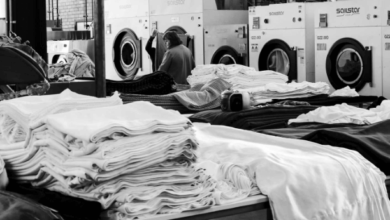Is Solar Panel Installation Worth It in 2025

Thinking about slapping some solar panels on your roof in 2025? It’s a big decision, and honestly, it can feel a bit overwhelming trying to figure out if it’s actually worth the money. You hear all sorts of things, from huge savings to complicated installations. Let’s break down what you really need to know about residential solar installers and the whole solar setup process, so you can decide if it makes sense for your place.
Key Takeaways
- The upfront cost of solar panels can seem high, but many incentives, like the federal tax credit, can bring it down significantly. Plus, the long-term savings on electricity bills can really add up.
- Your roof’s condition, sun exposure, and local electricity rates all play a big role in how much you’ll save and how quickly you’ll get your investment back.
- Beyond just saving money, going solar means more energy independence and a smaller carbon footprint, which are pretty good benefits too.
- Choosing the right type of panel and comparing quotes from different residential solar installers is super important to get the best deal and system for your home.
- Most solar systems are built to last, often with 25-year warranties, and require minimal maintenance, meaning you can enjoy consistent energy production for years.
Understanding The Costs Of Solar Panel Installation
When you’re thinking about getting solar panels, the first thing that usually pops into your head is the cost. It’s a big decision, and understanding where your money is going is pretty important. Let’s break down what you can expect to pay for solar panel installation in 2025.
Average System Pricing In 2025
So, what’s the damage? Well, the national average for a solar panel system installation in 2025 is hovering around $19,400, but that’s after you factor in the federal tax credit. Keep in mind, this is just an average, and the actual price can swing quite a bit. Some surveys show homeowners paying around $16,129 for a system with about 14 panels, while others suggest a full-size system of 20 to 30 panels could range from $24,000 to $36,000. It really depends on a lot of things.
Factors Influencing Installation Expenses
Several things can make your solar installation cost more or less. Your location is a big one; urban areas often have higher labor and permit costs compared to rural spots. The type of roof you have also matters. Complex roofs, or those made of materials like tile or metal, might need special mounting hardware, adding to the expense. Even your roof’s pitch and layout can affect how long the job takes and how much labor is involved. If your roof is steep or has multiple levels, it’s going to cost more. Sometimes, older homes might need electrical upgrades or structural reinforcements to handle the new system, which also adds to the bill.
Additional Component Costs
Beyond the panels themselves, there are other bits and pieces that add to the total cost. Mounting systems, for instance, can range from $2,400 to $2,800, with custom or ground mounts costing more than standard roof mounts. Monitoring technology, which lets you keep an eye on your system’s performance, can add another $300 to $800. If you’re looking at premium equipment, expect to pay more upfront, but these often come with better efficiency and longer warranties, sometimes up to 25 years. Don’t forget about potential costs for things like tree removal if branches are shading your roof, or permit and inspection fees, which can vary wildly depending on where you live. Some homeowners also opt for solar batteries, which can add a significant amount, often starting around $5,097 for a single unit and going up to $25,000 or more for whole-house backup systems, not including installation. It’s wise to get a few quotes to see how these costs stack up for your specific situation. You can check out resources like the EnergySage Marketplace to get a better idea of pricing in your area.
Financial Benefits Of Residential Solar Installers
When you’re thinking about putting solar panels on your house, the money side of things is usually pretty high on the list. And for good reason! Going solar isn’t just about being green; it’s also a really smart financial move for most homeowners.
Long-Term Savings On Electricity Bills
Let’s talk about the big one: saving money on your monthly power bill. Once your solar system is up and running, the electricity it generates is essentially free. This means you’re not sending as much cash to the utility company anymore. Over the lifespan of the panels, which is typically 25 years or more, these savings can really add up. We’re talking about potentially tens of thousands of dollars saved. The less you pay your utility company, the more money stays in your pocket. It’s a pretty straightforward concept, but the impact is significant.
Increased Home Value
It’s not just about your own savings, either. Homes with solar panels tend to sell for more than comparable homes without them. Studies have shown that solar can add a noticeable percentage to your home’s value, often translating to thousands of dollars more when you sell. It’s like a home improvement that pays you back over time and then gives you a bonus when you move. Think of it as a built-in upgrade that future buyers will appreciate.
Energy Independence And Grid Reliability
Beyond the direct financial perks, there’s a real sense of security that comes with generating your own power. You become less dependent on the utility company and their ever-changing rates. If there’s a blackout or a spike in energy prices, you’re much better positioned. It gives you a bit more control over your household’s energy future. Plus, by contributing clean energy to the grid, you’re helping make the whole system more reliable and sustainable for everyone.
While the upfront cost can seem like a lot, the long-term financial benefits, including reduced electricity bills and increased home value, make solar a sound investment for many households. It’s about more than just saving money; it’s about gaining energy independence and contributing to a cleaner future.
Maximizing Your Solar Investment
Leveraging State and Local Incentives
Beyond the federal tax credit, don’t forget to look into what your state and local governments are offering. Many places have their own rebates, property tax exemptions, or programs that give you credits for the clean energy you produce, like Solar Renewable Energy Credits (SRECs). These can really add up and make a big difference in your upfront costs. For instance, some states offer thousands in tax credits, and certain cities might even have cash-back rebates available. It’s worth doing a little digging to see what’s on the table in your area.
Understanding Net Metering Benefits
Net metering is a pretty neat system. Basically, when your solar panels produce more electricity than your home is using at any given moment, that extra power gets sent back to the utility grid. In return, your utility company gives you credits on your electricity bill. These credits can then be used to offset the cost of the power you draw from the grid at night or on cloudy days. It’s a fantastic way to get the most out of your solar system and further reduce your monthly bills.
Strategic Savings Through Bundling and Quotes
Want to save even more? Consider bundling your solar installation with other home upgrades, like a new roof or energy-efficient appliances. Sometimes, this can qualify you for additional discounts or rebates. Also, always get multiple quotes from different installers – we’re talking at least three. Prices can vary quite a bit between companies for the same size system, so comparing quotes can save you thousands. It’s also smart to size your system correctly; a system that’s too big is just an unnecessary expense. Finally, think about when you buy. Sometimes, installers offer better deals during slower months, like winter.
Choosing the right financing is also key. While paying cash gives you the most savings long-term, solar loans can be a good option if you need to spread out the cost. Just be mindful of interest rates. Leases and PPAs are also available, but remember, you typically don’t own the system with those, which means you miss out on tax credits and the full long-term savings.
Key Considerations For Solar Adoption
Before you jump into getting solar panels, there are a few things you really need to think about. It’s not just about slapping panels on your roof and calling it a day. You’ve got to make sure your house is even a good candidate for solar power.
Roof Suitability and Installation Requirements
First off, your roof needs to be in decent shape. If it’s old and needs replacing soon, you’ll want to deal with that before the panels go up. Removing and reinstalling panels later can add a good chunk of change to your roofing project, sometimes $1,000 to $3,000 or more. Also, think about the direction your roof faces and any shading from trees or nearby buildings. A roof that gets a lot of direct sunlight throughout the day is going to produce more power. The angle of your roof matters too, but installers can often adjust for that with mounting hardware.
Choosing The Right Panel Technology
There are a few main types of solar panels out there. You’ve got monocrystalline, polycrystalline, and thin-film. Monocrystalline panels are usually the most efficient and have a sleek black look, but they tend to cost more upfront. Polycrystalline panels are a bit less efficient and often have a bluish tint, but they can be more budget-friendly. Thin-film panels are flexible and lightweight, but they generally don’t produce as much power and might not last as long. For most homes, monocrystalline panels are a popular choice because they offer a good balance of performance and longevity.
Permits and Homeowner Association Guidelines
Don’t forget about the paperwork! You’ll likely need permits from your local city or county to install solar panels. This process can sometimes take a while. If you live in a neighborhood with a Homeowner’s Association (HOA), you’ll also need to check their rules. Some HOAs have specific guidelines about how solar panels should look or where they can be placed to keep the neighborhood looking a certain way. Ignoring these steps can lead to fines or even having to remove your system, so it’s best to get all your approvals sorted out first.
The Lifespan And Performance Of Solar Systems
So, you’ve got your solar panels installed, and you’re probably wondering how long they’ll keep chugging along and how much power they’ll actually produce over the years. It’s a fair question, right? You’re making a big investment, after all.
Panel Durability and Warranty Coverage
Most solar panels these days are built tough. They’re designed to withstand all sorts of weather, from heavy rain and snow to strong winds. You’ll typically find that panels come with a performance warranty, often guaranteeing around 80-90% of their original output after 25 years. Some manufacturers even offer longer warranties, so it’s definitely worth checking the specifics of what you’re buying. The panels themselves are usually pretty solid, often made with tempered glass and sturdy frames. Think of them like a really durable window that also happens to make electricity.
Long-Term Energy Production
While panels are built to last, their energy output does tend to decrease slightly over time. This is a normal part of how they work. It’s not like they suddenly stop producing power, but rather a slow, gradual decline. The good news is that with modern technology, this degradation is pretty minimal. For example, a panel might start at 300 watts and, after 25 years, still be producing around 250 watts. This means your system will continue to generate a significant amount of electricity for decades.
Ongoing Maintenance Expenses
One of the best parts about solar panels is that they don’t require a ton of upkeep. You won’t be doing oil changes or replacing spark plugs. Mostly, it’s about keeping them clean. If you live in a dusty area or somewhere with lots of birds, you might need to give them a wash every now and then to make sure they’re catching as much sun as possible. Some people opt for professional cleaning, but often, a good rain shower does the trick. You might also want to keep an eye on your system’s performance through a monitoring app, which can alert you if something seems off. But generally, the ongoing costs are pretty low, which is a big plus.
The initial cost of solar panels is significant, but understanding their long-term performance and low maintenance needs helps paint a clearer picture of the overall value. It’s not just about the upfront price; it’s about the consistent energy generation and savings for many years to come.
Is Solar Worth It For Your Home?
So, is putting solar panels on your house actually worth it in 2025? For most people, the answer is a pretty solid yes. Think about it: electricity prices just keep creeping up, and having your own power source means you’re not as affected by those hikes. Plus, you get that nice feeling of being more energy independent. It’s not just about saving money, though that’s a big part of it. Homes with solar panels tend to sell for more, which is a nice bonus if you ever decide to move. Most panels are built tough and come with long warranties, so they should keep producing power for a long time.
Assessing Your Energy Consumption
Before you even think about panels, you really need to get a handle on how much electricity your household actually uses. Look at your past utility bills – how many kilowatt-hours (kWh) do you use each month? Knowing this helps figure out how big a system you’ll need and how much you can realistically save. If you’re a low-energy user, the payback period might be longer, so it’s good to have that info upfront.
Impact of Local Electricity Rates
Where you live makes a big difference. If your local electricity rates are high, going solar will likely save you a lot more money, faster. In places where electricity is cheap, the savings might not be as dramatic, and it could take longer for the system to pay for itself. It’s worth checking out what your utility company charges per kWh.
Payback Periods and Return On Investment
Most homeowners find that their solar panel systems pay for themselves within about 6 to 10 years. After that, the electricity generated is essentially free. Considering most systems last 25 years or more, that’s a lot of savings over the system’s life. You can also look into programs like the Canada Greener Homes Initiative for potential grants to help with costs [8748].
It’s important to remember that while the upfront cost can seem high, the long-term financial benefits, combined with incentives and increased home value, often make solar a sound investment for many households.
So, Is Solar Worth It in 2025?
Alright, let’s wrap this up. After looking at all the numbers and what people are saying, it seems like putting solar panels on your house in 2025 is a pretty solid move for most folks. You’ve got that big federal tax credit, plus a bunch of state and local deals that can really bring down the initial cost. Plus, with electricity prices just going up and up, making your own power from the sun just makes more sense. It’s not just about saving money, though. You’re also doing a good thing for the planet, and honestly, it can make your home more valuable if you ever decide to sell. Sure, it’s not for absolutely everyone – if your roof is always in the shade or you’re moving next year, maybe hold off. But for most people, the long-term savings and the energy independence you get make it a smart investment. It’s a big decision, for sure, but the payoff seems to be there.
Frequently Asked Questions
How much do solar panels typically cost to install in 2025?
The cost of solar panels can change a lot depending on the size of the system you need and the type of panels you pick. Generally, a full system with 20 to 30 panels might cost somewhere between $24,000 and $36,000 before any discounts. But don’t worry, there are often government programs and local deals that can bring that price down a lot!
Is it really worth putting solar panels on my house?
Yes, installing solar panels is usually a good idea for your home. You can save a lot of money on your electricity bills over the years, and it can even make your house worth more when you sell it. Plus, you’ll be using clean energy, which is great for the environment!
How long does it take to get my money back from installing solar panels?
Most of the time, you’ll start seeing savings on your electricity bills pretty quickly after the panels are installed. It usually takes about 6 to 10 years to earn back the money you spent on the system. After that, the electricity your panels make is basically free for many years!
What do I need to make sure my house is ready for solar panels?
You’ll need a roof that’s in good shape and gets plenty of sunshine, ideally facing south. You’ll also need to make sure your roof can handle the weight of the panels. Sometimes, you might need permits from your town or city, and if you live in a neighborhood with a homeowners’ association, they might have rules about how the panels look.
How long do solar panels last and how well do they keep working?
Solar panels are built to last a long time, usually with warranties that cover them for 25 years or more. Even after that time, they should still produce a good amount of electricity, often around 85% of what they made when they were new. So, they’re a pretty reliable investment.
What are the best ways to save money when getting solar panels?
The best way to save money is to get quotes from a few different companies to compare prices. You can also look into special government programs or local deals that offer money back or tax breaks for installing solar. Sometimes, bundling solar with other home upgrades, like a new roof, can also lead to extra savings.







